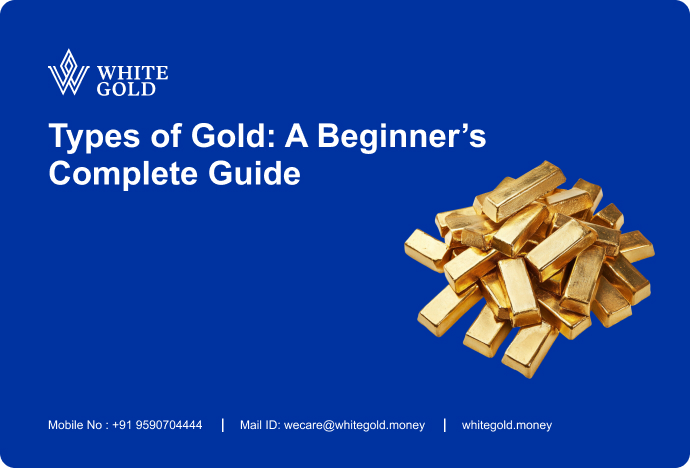Understanding The Making Charges And Wastage Charges On Gold Purchase

5min read

What is one of the most frequent and expensive purchases Indians make? You guessed it right, it’s gold. No matter what social strata people come from, gold is the most commonly owned asset amongst all the social classes in India. Apart from the shiny gold ornament, gold holds a high traditional value and is also a hedge in times of financial crisis.
Whether you are looking forward to a new gold purchase, coins, or bars, you’ve likely come across terms like “making charges” and “wastage charges.” Understanding these charges is essential when making a gold purchase, as they can significantly impact the overall cost and value of your investment. In this guide, we’ll delve into the intricacies of making charges and wastage charges, demystifying the world of gold pricing.
Making Charges: The Artistry Fee
When you purchase gold jewellery, a significant portion of the total cost is attributed to making charges. Making charges represent the cost of crafting the jewellery piece, including the labor, skill, and expertise required to shape the gold into the desired design. These charges also account for the wastage of gold during the manufacturing process.
Here are key points to consider regarding making charges:
1. Craftsmanship and Design: Making charges are often higher for intricately designed pieces of jewelry that require more labor and skill. Custom-designed jewellery or pieces with detailed handwork may command higher making charges.
2. Gold Purity: The purity of the gold used in the jewellery can affect making charges. 24-karat gold, being the purest form, can be more challenging to work with due to its softness, which may increase making charges.
3. Weight of the Jewellery: Making charges are typically calculated based on the weight of the gold used in the piece. Heavier jewellery pieces may have higher making charges.
4. Brand and Retailer: Different brands and retailers have varying pricing structures for making charges. High-end jewelers may charge more for their craftsmanship and brand reputation.
5. Negotiation: In some cases, you may have room for negotiation on making charges, especially for custom-designed pieces or high-value purchases. It’s advisable to inquire and compare prices from different jewellers before settling on the purchase.
It’s important to note that making charges is a one-time expense incurred at the time of purchase once you own the piece of jewellery. If you consider to sell gold, its value will primarily depend on the current market price of gold, gemstone value (if applicable), and the overall design and condition of the jewellery.
Wastage Charges: Accounting for Gold Loss
Wastage charges, also known as “loss charges” or “wastage factor,” is a component of the overall cost of gold jewellery. They account for the inevitable loss of gold that occurs during the manufacturing process, primarily due to:
1. Melting and Alloying: Gold is often mixed with other metals (alloyed) to increase its durability and hardness. This process can result in some gold being lost.
2. Cutting and Shaping: Gold is cut and shaped into various components of the jewellery piece. These processes may result in small gold particles or dust that cannot be recovered.
3. Polishing and Finishing: The final polishing and finishing of the jewellery can result in the loss of a thin layer of gold.
Wastage charges are typically calculated as a percentage of the gold’s weight in the jewellery. The percentage can vary among jewellers and is often higher for traditional, handcrafted jewellery. It’s crucial to be aware of the wastage factor and how it affects the overall cost when comparing prices from different jewellers.
Factors Influencing Wastage Charges:
Several factors can influence the level of wastage charges:
1. Jewellery Type: Different types of jewellery (e.g., necklaces, bangles, rings) may have varying wastage charges due to differences in manufacturing techniques.
2. Purity of Gold: As mentioned earlier, higher-purity gold (e.g., 24-karat) can be more challenging to work with and may result in higher wastage charges.
3. Design Complexity: Elaborate designs may lead to more gold being lost during crafting and finishing.
4. Jeweller’s Expertise: Experienced jewellers may have lower wastage rates due to their skill in minimizing gold loss.
Tips for Minimizing Making and Wastage Charges
1. Compare Multiple Jewellers: Before making a gold purchase, obtain quotes from multiple jewellers, especially in case you are looking for personalized piece. This can help you identify competitive pricing.
2. Understand the Fine Print: Read and understand the terms and conditions related to making charges and wastage charges at the jeweller you choose. Be aware of any additional charges or conditions.
3. Negotiate: Don’t hesitate to negotiate with the jeweller, especially for higher-value purchases or custom-designed pieces. Some jewellers may be open to adjusting their charges.
4. Consider Resale Value: Keep in mind that while making and wastage charges are upfront costs, if you choose to sell gold, the resale value will solely depend on the gold’s current market price and design.
5. Get a Detailed Receipt: Ensure that your purchase receipt provides a breakdown of all charges, including making and wastage charges, along with details of the gold’s purity and weight.
In conclusion, making charges and wastage charges are significant factors to consider during gold purchase. They reflect the craftsmanship, design, and gold loss during manufacturing. By understanding these charges and their impact on the overall cost, you can make informed decisions and enjoy your gold jewellery with confidence.







